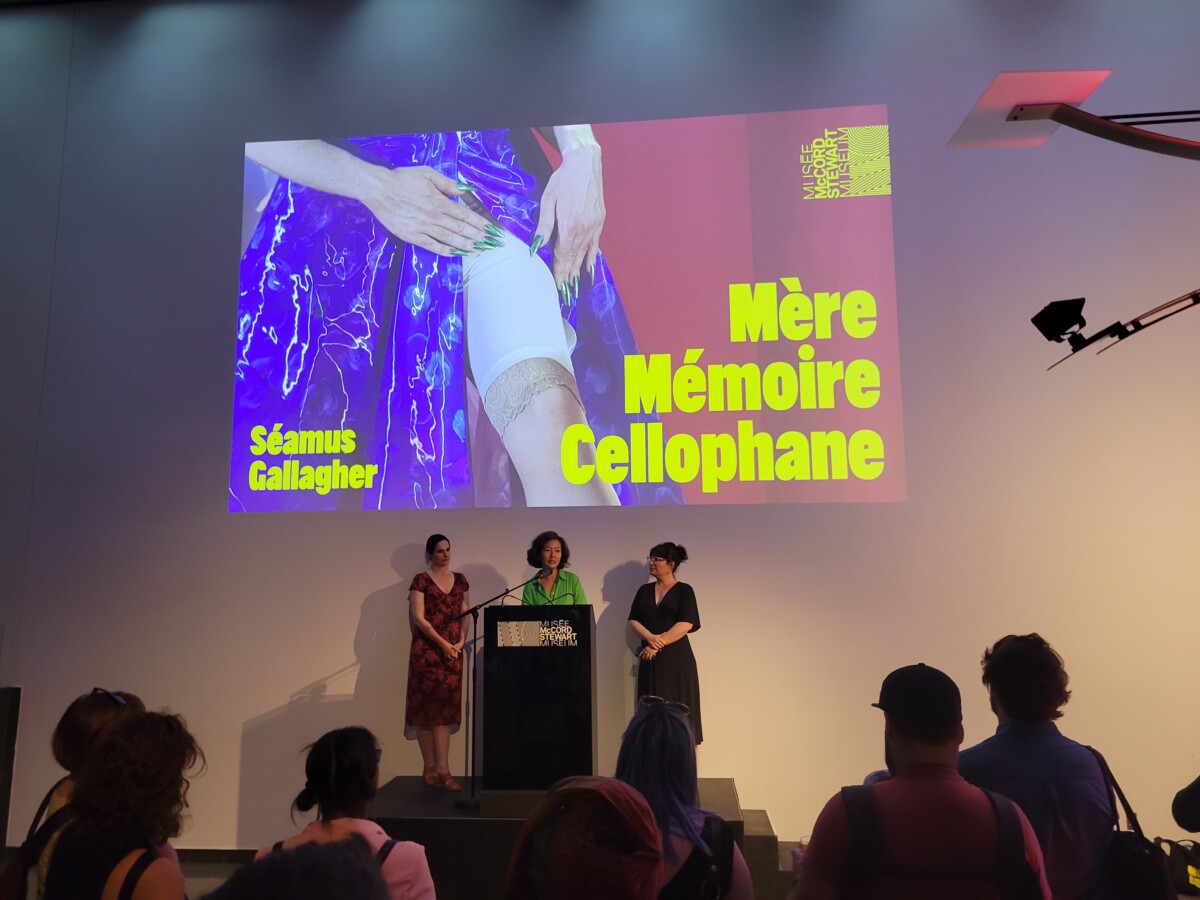MOMENTA’s 18th edition maintains the great axiom: the only constant is change.
Since 1989, Montréal’s MOMENTA Biennale de l’image has brought artists from around the world to collaborate with the local creative community in celebration of contemporary art that speaks to global concerns. Expanding on its origins as an exposition of cutting edge photography, MOMENTA’s 18th edition puts forth a program of artists who employ a breadth of methodologies in their work including video, sculpture, lenticular printing, projection, performance, miniature painting, and more.
The opening event was held at Fonderie Darling—a converted 19th century industrial building that had been abandoned in 1991 until it was revived as a visual arts centre in 2002. The repurposed foundry served as the perfect venue for the vernissage, for its history aptly suits MOMENTA’s theme for this year: Masquerades: Drawn to Metamorphosis.
In a world of fixed identities that tether us to limited ways of being, the masquerade invites us to embrace transformation, fluctuation, novelty and possibility. It is an intervention that offers a space for reimagining identity as a continuous process of becoming.
“This biennial is about desire—it is about becoming; becoming other, becoming image, becoming oneself through the tangles of the gaze. Becoming is appearing and disappearing—showing and concealing. It is a transformation in time and space—bringing to the surface the energies of the archaic, the forgotten, the subterranean. This is about experimenting with one’s place and one’s boundaries—never affixed in this world; embracing transitional states,” said curator Ji-Yoon Han to the crowd outside the foundry.
MOMENTA provided 23 artists with the opportunity to exhibit a solo-show at one of the 16 participating venues around Montréal from the Mile End to the Old Port. The first exhibition to open was Séamus Gallagher’s “Mother, Memory, Cellophane” at the McCord Stewart Museum near McGill University. Han remarked that Gallagher was one of the first artists she had in mind as she was developing the theme for the biennale, for their interdisciplinary work is rooted in transformation, liminality, and motion.
“Mother, Memory, Cellophane” is Gallagher’s first museum scale exhibition. Upon entering the gallery on the third floor of the McCord, the viewer encounters an illuminated pink platform occupied by an invisible figure wearing an extravagant plastic pink-and-blue dress with a sash that reads “Miss Chemistry.” This dramatic, phantasmic display introduces the viewer to the protagonist of the show, the ghost of Miss Chemistry.
The 1939 New York World’s Fair, titled “World of Tomorrow,” showcased the anticipation for rapid scientific advancement as a new dawn for society. It was here where the DuPont company launched their new nylon stockings, donned by a model named Miss Chemistry, who personified chemistry as human progress, calling her the “the plastic woman of the future.” Her stereotypical feminine beauty, enhanced by the synthetic material of the stockings, stood as a symbol of mid-20th century values and visions of the future. Today, we look back on these sensibilities with eyes that have witnessed the true legacy of the 20th century—so-called progress at the cost of violence, pollution and uninhibited consumerism.
“It is the first time that Séamus is dealing with an historical moment,” said Han. “This is one of the reasons why we thought it would be a good match with the McCord museum.”
The title of the show is drawn from a 1940 survey that claimed the words “Mother,” “Memory,” and “Cellophane” as the most beautiful words in the English language—a testament to the entanglements between femininity, nostalgia and synthetic material culture. These notions intertwine and constitute the character of the phantom of Miss Chemistry that Gallagher appropriates through drag performance.
Moving through the gallery, lenticular prints line the periphery of the space. The holographic quality of the surface denies the audience a fixed image to gaze upon, and rather offers an oscillation between text and image that changes along with the viewer’s movement. The print “Desire’s Inherent Vice Belongs in its Accumulation” (2023) superimposes the titular text over a still image of the artist performing as Miss Chemistry. As they perform, their face is transformed through a projection mapped onto a mask, creating layers of identity. These layers are further complicated by the shimmering surface of the print that obscures just as much as it reveals.
Gallagher has thus created a persona that cannot be grasped; “an image that can never be seized” as Han describes it. Their technique and materials speak to the ever-shifting and evolving nature of identity and expression. Hear more from the artist during their free virtual discussion of their work on Nov. 22, 2023 at noon, which will be livestreamed on the museum’s Facebook page.
Find MOMENTA’s upcoming calendar of discussions, conferences and workshops as well as their exhibition map at their website here. The biennale will be ongoing until Oct. 22, 2023.
